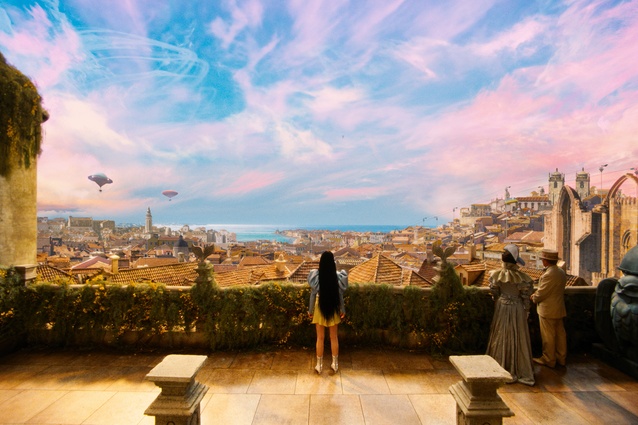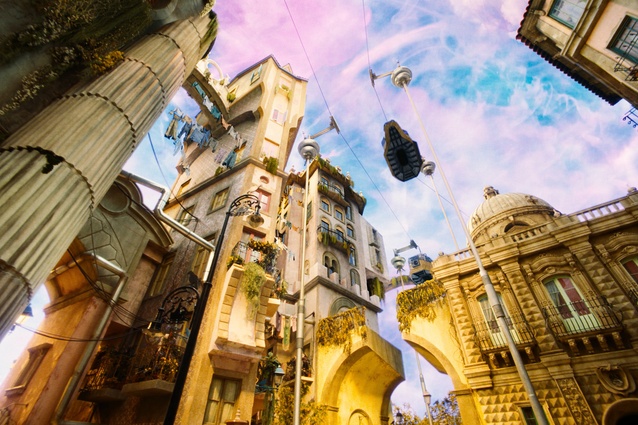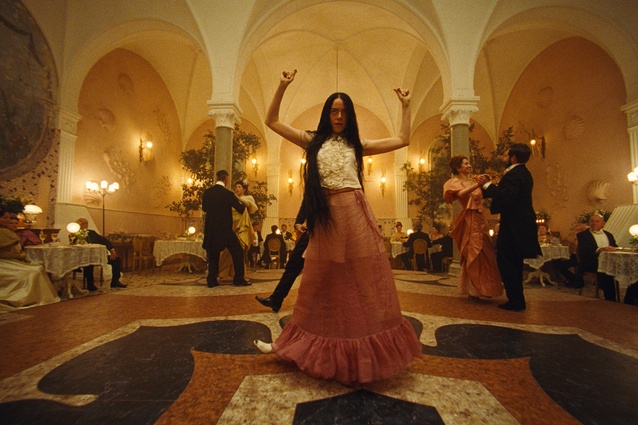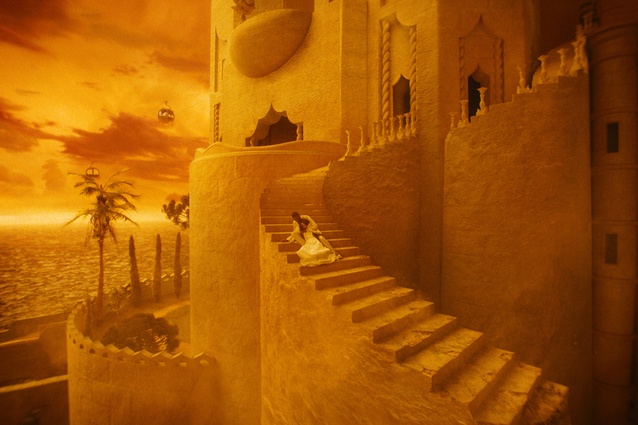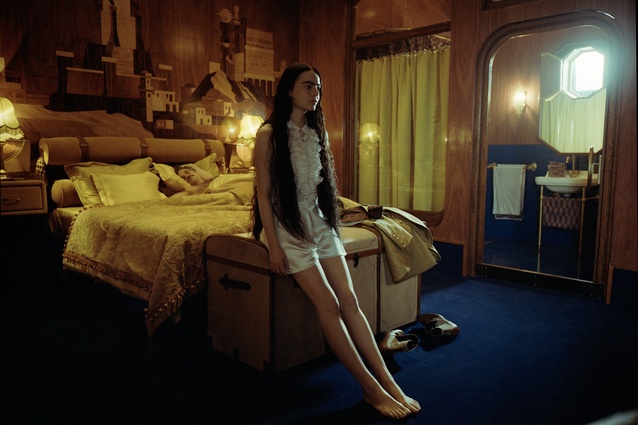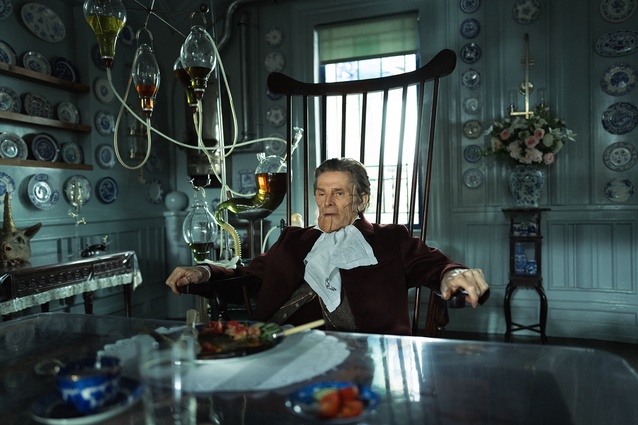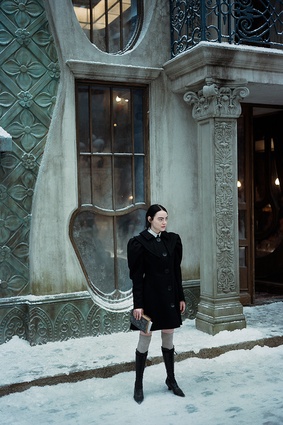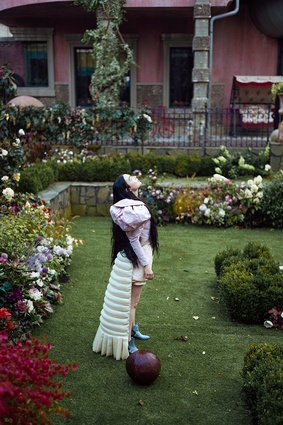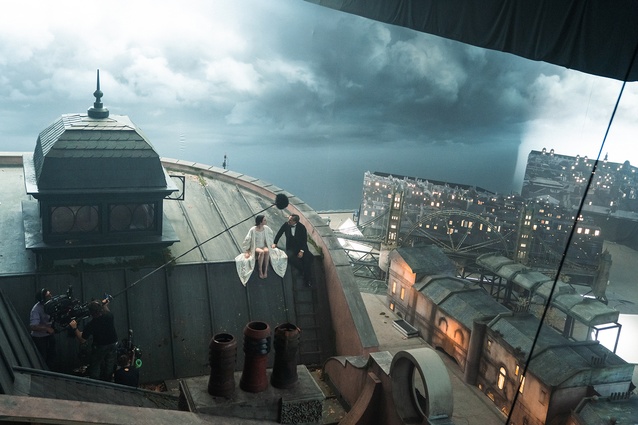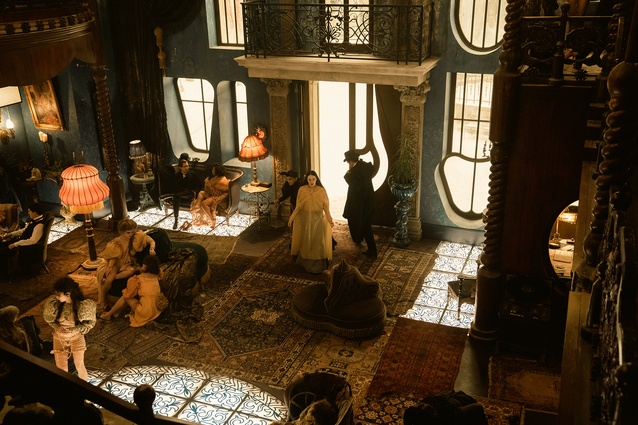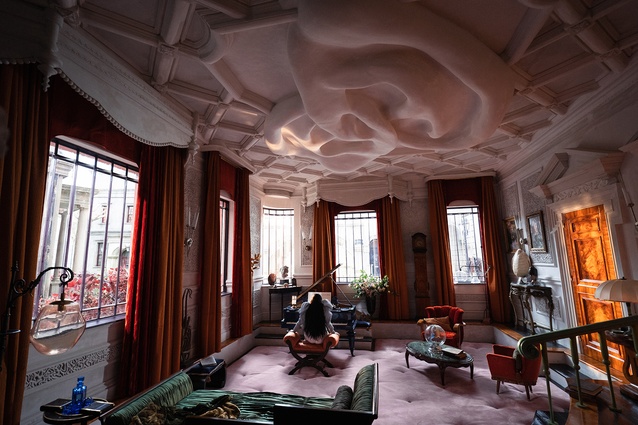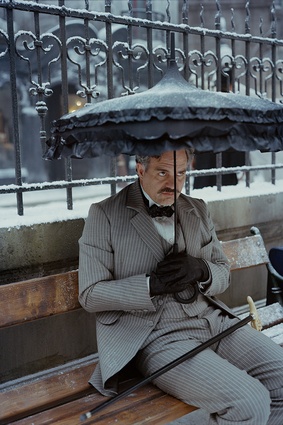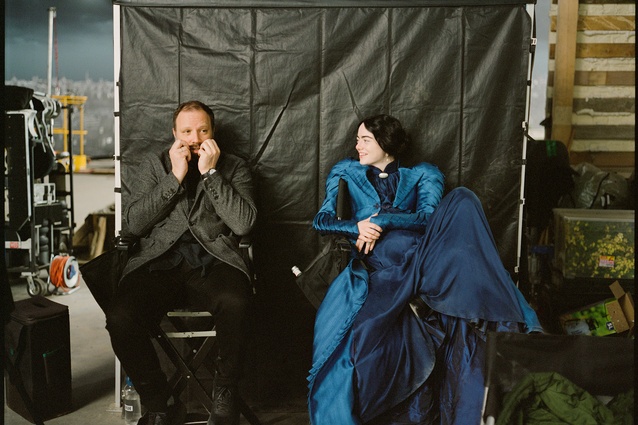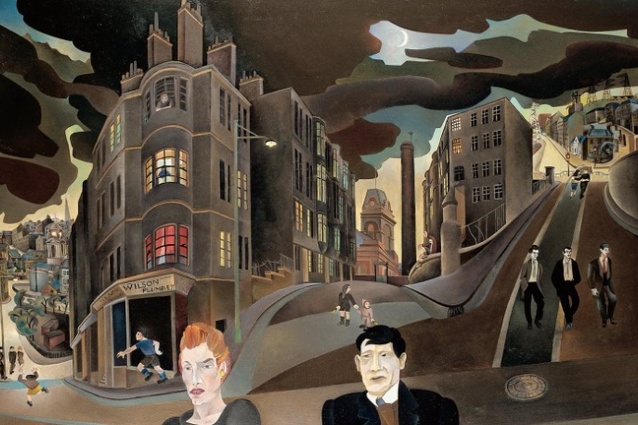Poor Things: A surreal, grand architectural tour
Films are always architectural. And for Yorgos Lanthimos of The Favourite and The Lobster renown, settings are integral to embodying both plot and mood. His characters are often isolated within grand or confusing buildings, their surroundings captured with bizarre wide-angles, filling the frame with lavish, highly stylised sets.
His latest film, Poor Things, based on Alasdair Gray’s 1992 novel, is perhaps his most architectural film to date. It serves as a fantastic example of the power of architectural fantasy to portray the growth of Bella Baxter (played by Emma Stone) on her coming of age journey.
She begins trapped in her father Godwin’s house (whom she calls her ‘God’), surrounded by winding staircases and odd animal experiments emanating from God’s laboratory, in a direct parody of Shelley’s Frankenstein.
But Bella’s spirit cannot be captive, as the men around her would like. “Besides,” she says, “a life without freedom to choose is not worth having.” So she embarks on a Mediterranean voyage of self-discovery and sexual liberation with Duncan Wedderburn, a sleazy Lothario figure, full of bravado and insecurity in equal measure.
In architectural terms, this is her grand tour, making passage from Lisbon to Alexandria, then to Paris, on a fantastical steamship, to discover the wonders of the world. These cities are not literal recreations, rather they are surreal versions governed by dream logic and Bella’s childlike wonder, perfectly capturing the feeling of discovery and voyage.
The production design for her odyssey is a mismatch of influences and references:
You’ll find a ‘Steampunk’, Art Nouveau inspired London, a jumble of classical and modern elements throughout Godwin’s house, lavish Art Deco steamship interiors, and Lisbon’s trams — transformed into retro-future gondolas, soaring above the cityscape.
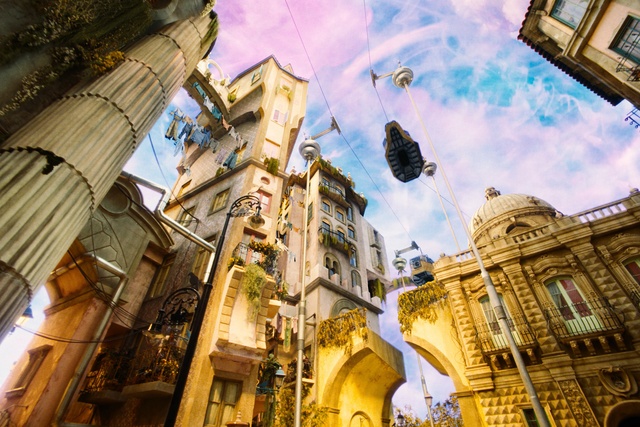
Strong structural elements are omnipresent: the curving beams of Godwin’s laboratory echo the flying buttresses of Paris, which seem, if anything, to hold the whole city together. The half-ruined staircases and spires of Alexandria —half Great Lighthouse, half Tower of Babel — serve as both overt symbol and place for epiphany.
With all of these references, It is impossible to pin down a time period; everything is stitched together haphazardly like one of Godwin’s Frankenstinian animal-hybrids.
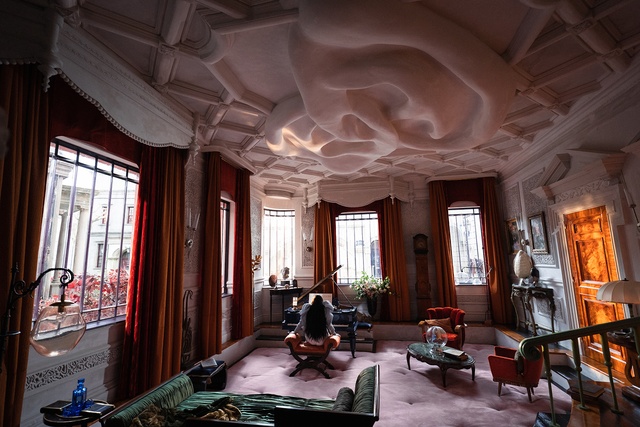
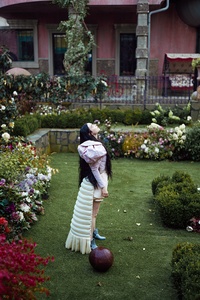
For Bella, as a tabula rasa character, and raised without morality by Godwin, she has no reference for stylings. Just as sex for her is amoral, because she has not been taught social expectations or politeness, the film’s architecture is uninhibited, freely combining disparate meanings in the same way her juvenile dialect invents new phrases like “furious jumping.”
The architecture becomes, in her strange and innocent world, a playground, a place for adventure and discovery, new experiences to be found around every corner.
Lanthimos and cinematographer Robbie Ryan capture these architectural settings with weirdly appropriate wide-angles, turning much of our focus towards the scenery, presenting the surroundings in the way Bella sees them, captured with over-saturated lighting, fluorescent skies, or monochromatic frames.
Lanthimos’ trademark fisheye lens is also on display, the labyrinthine stairwells become Escher-esque etchings, the alleyways of Lisbon echo Gaudí or Kafka with their twisting, organic grandeur.
These sets seem constructed with viewpoints in mind: Godwin’s staircase filled with nonsensical balustrades and landings, a Lisboan woman singing Fado above an alleyway, Wedderburn calling to Bella on her Parisian balcony. Characters inhabit this world in all dimensions. Multiple times Bella looks from rooftops across the city, and the city stares back, full with windows, used as both means of escape and means of imprisonment.
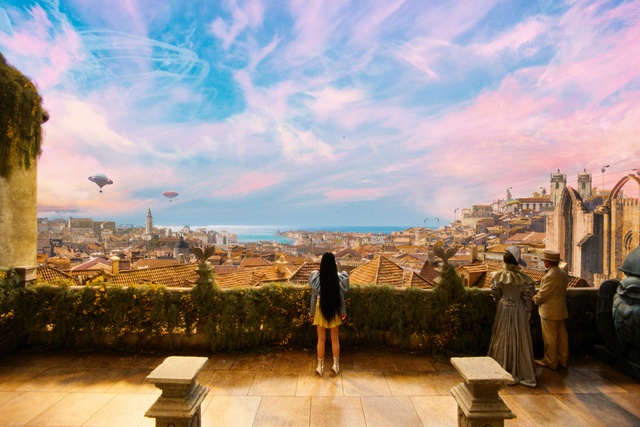
This last point is really what the film is concerned with: freedom. What does it mean to have autonomy? What does the process of growing up, both bad and good, feel like?
If anything, the film shows the power of architecture and its representation to reflect and add to this narrative. Its strength is how the production design, cinematography, and score all contribute to the story, which at its heart, is really a universal coming-of-age tale.
“If anything, the film shows the power of architecture and its representation to reflect and add to this narrative. Its strength is how the production design, cinematography, and score all contribute to the story, which at its heart, is really a universal coming-of-age tale.”
Where Gray’s novel is told through both meta-fictional history and McCandles’ unreliable autobiography (with comments by Bella), in the film we follow Bella’s life solely through her perspective.
This shift, whilst undoubtedly necessary for the different medium, does dent much of the gender criticism. In the film Bella is not defined first and last by male words as she is in the original text. While this makes for a more joyful and positive experience — one that celebrates freedom and coming-of-age and all different forms of liberation: be it sexual, political, or simply touristic — it does play the predatory men off as less monstrous and more comedic.
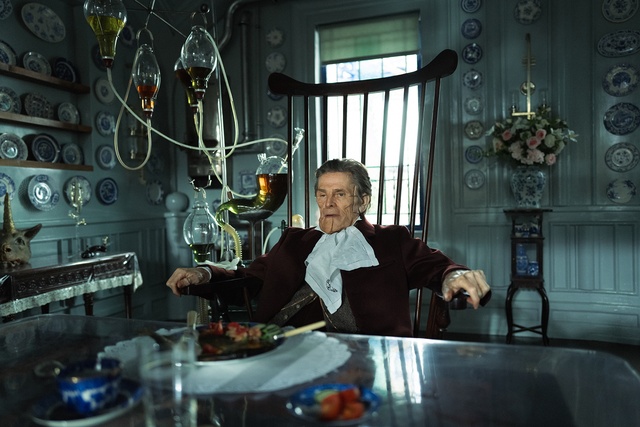
It is a shame Lanthimos felt it necessary to change the setting from Glasgow to London, stating he felt “totally disingenuous” to set the film in Scotland.
For Gray, as a uniquely Glaswegian, vernacular writer, and one focussed on bringing attention to his city as Robin McKie wrote in The Guardian, this severing of the novel’s roots may have been inexcusable. However, Gray did give his tick of approval to the director before his death in 2019, so we’ll never know for sure.
Regardless, the film did succeed in matching the aura and feeling found in Gray’s famous painting of Glasgow (below). The streets connect and move like a canvas of stories, a landscape of meaning waiting to be discovered.
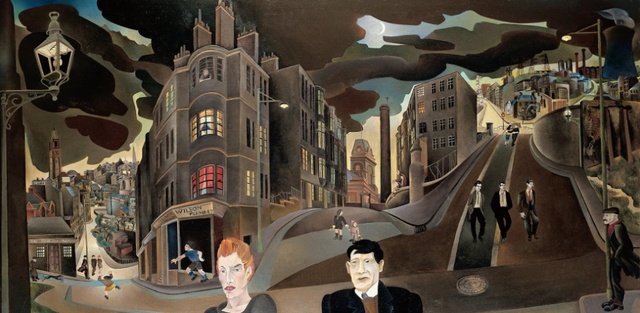
In this regard the film succeeds, giving us a subjective experience of the architecture, connecting the audience more strongly with Bella’s perspective. Where a lesser film might shy away from the weird elements, Lanthimos leans in with his trademark oddness, creating an original world, unencumbered by style, and able to express itself through both comedy, tragedy, and joy.
If anything, Poor Things serves as an shining example of architecture’s ability to embody wonder and freedom, and to provide a backdrop for the universal story of the grand tour — that is, growing up.
Poor Things is in cinemas now. Watch the trailer here:

